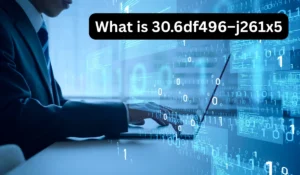
Iversær
Introduction to Iversær
Iversær is a rising name in the tech innovation landscape, but what exactly is it? At its core, Iversær represents a hybridized platform that merges artificial intelligence, advanced automation, and real-time data processing to create an adaptable digital ecosystem. Whether it’s software, a modular technology, or a proprietary system developed for specific industries, the term “Iversær” embodies futuristic integration where intelligence and adaptability meet. This next-gen concept has been widely discussed across forums and tech communities due to its disruptive potential in modern workflows.
The idea behind Iversær originated as a response to the growing complexity of data-driven environments. In a world dominated by fragmented systems and inconsistent automation, Iversær proposes a cohesive structure that allows businesses to automate tasks, analyze performance, and scale operations—seamlessly. By promoting interoperability, it eliminates many of the silos common in traditional infrastructures.
With industries facing mounting pressure to innovate, the relevance of Iversær in 2025 cannot be overstated. From AI-backed decision-making to predictive systems that learn and evolve, Iversær holds the promise to streamline processes across technology, healthcare, marketing, and more. As organizations seek smarter and leaner operational models, Iversær becomes a crucial keyword in that transformation conversation.
As we delve deeper, we’ll explore the functionality, applications, and potential that make Iversær one of the most talked-about innovations in digital transformation today.
Key Features and Functional Capabilities of Iversær
One of the standout elements of Iversær is its modular architecture. It isn’t a one-size-fits-all solution but a highly customizable platform designed to evolve with the needs of its users. Whether you’re a startup aiming to automate customer service or a large enterprise needing AI-powered analytics, Iversær scales to fit the task. Its adaptable design is supported by machine learning algorithms that continuously analyze user behavior and system performance to refine outcomes.
At its core, Iversær leverages advanced AI, real-time cloud computing, and decentralized architecture. It can process vast data sets, identify trends, and suggest automated actions—all within seconds. Unlike traditional tools that rely on static rule sets, Iversær operates dynamically. It constantly learns and reshapes its logic, helping teams make faster and more informed decisions without being bogged down by manual oversight.
Another powerful feature is its interoperability. Iversær can be integrated with popular platforms such as AWS, Google Cloud, Salesforce, and even legacy systems through APIs and middleware layers. This ensures seamless data exchange across platforms, improving efficiency and reducing redundancy.
Security is also a stronghold for Iversær. Built-in encryption, behavioral firewalls, and identity validation modules ensure that both user data and company infrastructure remain protected from external threats. This makes it a go-to option for sectors where data privacy and compliance are top priorities, such as healthcare and finance.
How Iversær Works: A Deep Technical Breakdown
Understanding how Iversær works means examining its layered infrastructure. The foundation lies in its AI decision-making engine, which processes incoming data streams through a series of neural networks. These networks are trained using real-world datasets relevant to the user’s industry. As data enters the system, it’s evaluated, categorized, and stored using a hybrid cloud model—this allows for both localized performance and global accessibility.
The data flow starts with ingestion—data from APIs, webhooks, databases, or sensors is collected and standardized using preprocessing modules. Once formatted, the AI engine begins analysis. It identifies key patterns, detects anomalies, and generates insights that can trigger automated workflows. For example, in an e-commerce environment, Iversær might notice a sudden dip in user engagement and automatically launch a retargeting campaign.
Integration with other systems is handled through Iversær’s open API framework. This means businesses can plug it into their CRM, ERP, CMS, and even IoT devices. A developer-friendly SDK also enables the customization of modules, allowing engineers to build specific functions or modify existing ones without starting from scratch.
Another highlight is the real-time dashboard interface. Users can view metrics, configure logic paths, and adjust AI parameters on the fly. Everything from KPIs to predictive forecasting is made accessible through a user-friendly UI that hides the complexity behind the scenes.
Use Cases and Industry Applications
Iversær is not limited to a single industry; its versatility is one of its strongest assets. In the healthcare sector, it can assist in diagnostics by analyzing patient histories and symptom data, offering potential conditions before a human physician reviews the case. Hospitals also use it for managing patient flows, predicting resource needs, and automating administrative workflows.
In marketing and advertising, Iversær powers campaign automation, audience segmentation, and performance optimization. It can track how users interact with digital content and use those insights to refine targeting in real time. This results in more personalized outreach and increased ROI for marketing teams.
Financial services also benefit immensely from Iversær. From fraud detection to risk assessment, its ability to parse through financial transactions and flag unusual behavior is invaluable. Banks can utilize it for compliance, automating KYC processes, and improving customer engagement through smart chatbots.
Even education and e-learning platforms are incorporating Iversær to personalize content delivery based on student behavior and performance. The AI tailors quizzes, modules, and reading materials to the unique learning style of each individual, boosting outcomes and retention rates.
Across all these use cases, the common thread is clear: Iversær improves efficiency, accuracy, and scalability.
Pros and Cons of Iversær
Like any technology, Iversær comes with its own set of strengths and limitations. Starting with the pros, its greatest advantage lies in automation. By significantly reducing the need for human intervention, it allows businesses to redirect their efforts toward strategic tasks. The system is also highly scalable, making it suitable for both small businesses and large corporations. Its flexibility means it can adapt to diverse workflows and industry needs.
Another notable benefit is real-time insight generation. Iversær’s continuous learning loop ensures that insights improve over time. This provides a competitive edge, especially in fast-paced industries like retail or finance. Enhanced security and compliance frameworks make it a trustworthy option even for regulated environments.
On the downside, implementation can be complex for non-technical teams. While the interface is user-friendly, the initial setup—especially for advanced customizations—may require technical support. There’s also the learning curve to consider for organizations new to AI or automation tools.
Another challenge is cost. While Iversær offers immense value, the investment required for full-scale deployment might be steep for smaller operations. Finally, as with any AI system, ethical concerns regarding data usage and algorithmic bias are worth exploring and addressing.
Future of Iversær: Trends and Predictions
The future of Iversær is aligned with the evolution of artificial intelligence and autonomous systems. Experts predict that in the next 3–5 years, Iversær will incorporate cognitive automation, allowing it to not only analyze data but also understand context, emotion, and intent. This will elevate its role from a decision-support system to a decision-making one.
One emerging trend is edge computing integration, where Iversær will operate on local devices to reduce latency and dependency on cloud infrastructure. This is particularly useful for industries such as manufacturing and logistics where real-time action is critical.
Another likely development is the democratization of Iversær through low-code/no-code platforms. These will allow users with little technical knowledge to build custom solutions, enabling wider adoption across SMBs and educational institutions.
We can also expect greater emphasis on ethical AI, with transparent auditing, bias detection modules, and explainable AI (XAI) being built into the framework. As global regulations tighten, Iversær is likely to position itself as a compliant, secure, and trustworthy platform.
Conclusion
Iversær is more than just a buzzword—it’s a transformative technology redefining how businesses automate, analyze, and act. With its powerful combination of AI, flexibility, and real-time adaptability, it holds immense promise for the future of digital operations. While it comes with a learning curve and some complexity, the benefits far outweigh the challenges for those ready to embrace the future.
Whether you’re in finance, healthcare, marketing, or tech development, Iversær offers tools that can streamline your operations and elevate decision-making. As industries continue to digitize and adopt AI at scale, platforms like Iversær will be at the forefront of that revolution.
Also Read: Gameverse TheGameArchives






